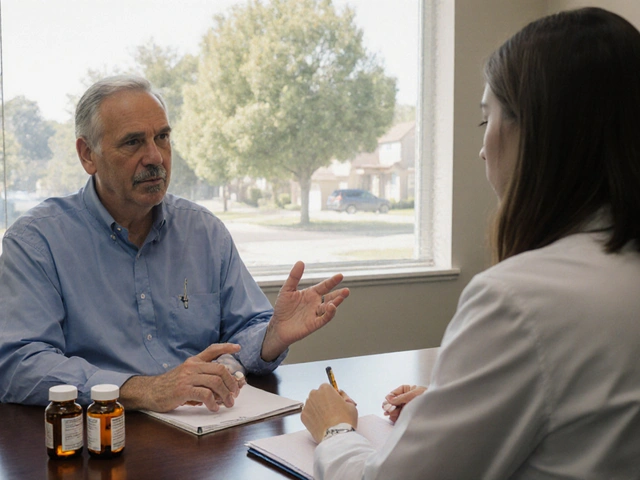High blood pressure: practical tips and trusted resources
High blood pressure (hypertension) often shows no symptoms but quietly raises the risk of heart attacks, strokes, and kidney problems. The quickest useful step you can take is to know your numbers: use a validated home cuff, sit quietly for five minutes before measuring, take two readings one minute apart, and log them. Many clinicians aim for readings under 130/80 for people at higher risk and under 140/90 for others — discuss your target with your doctor.
Simple things to lower your numbers
Small changes make a big difference. Cut back on salt and processed foods, aim for 30 minutes of moderate exercise most days, limit alcohol, and boost vegetables and fiber in your meals. Losing just 5% of body weight often lowers blood pressure. Try the DASH-style approach: more fruits, vegetables, whole grains, and lean protein. Also check your sleep — poor sleep and untreated sleep apnea can keep blood pressure high.
If you take medication, stick to doses and schedules. Don’t stop diuretics or ACE inhibitors without talking to your clinician. Diuretics like spironolactone can change your electrolytes, so hydration and potassium balance matter — read our hydration tips for spironolactone users for practical advice: Hydration Tips for Spironolactone Users Who Love Cocktails. For info on a common ACE inhibitor used worldwide, see our Coversyl guide and safe buying tips: Where to Buy Coversyl Online.
Medications and what to watch for
Common drug classes for high blood pressure include ACE inhibitors (like perindopril/Coversyl), ARBs, calcium-channel blockers, thiazide diuretics, and mineralocorticoid receptor antagonists (like spironolactone). Each has benefits and side effects — ACE inhibitors can cause cough, diuretics can lower potassium and raise uric acid, and some drugs interact with other medicines. Keep a current medication list and tell your provider about supplements and online purchases.
Buying meds online? Be careful. Choose pharmacies that require prescriptions, show clear contact info, and are registered with regulatory bodies. Our guides explain how to spot red flags and list safer alternatives for ordering prescriptions: canadapharmacy.com: Your Guide, Pharmex Direct Alternatives, and Best Online Pharmacy Alternatives to MedExpress UK. These help you compare services, delivery, and legitimacy.
When should you call your doctor? Seek urgent help for readings above 180/120 or if you have sudden chest pain, shortness of breath, severe headache, confusion, or vision trouble. If your home readings stay high despite meds and lifestyle measures, book an appointment — adjustments or tests (like kidney checks or medication levels) may be needed.
Want focused reading? Start with the Coversyl and spironolactone articles above, keep a weekly blood pressure log, and bring it to appointments. Small, steady steps — reliable monitoring, practical diet and activity changes, and safe medication choices — will get you closer to healthier blood pressure.
Toprol, also known as metoprolol, is a common beta blocker prescribed for high blood pressure, heart issues, and even migraines. This article dives deep into how Toprol works, its benefits, possible side effects, and practical tips for living well while taking it. By understanding this medication better, patients and families can feel more confident managing health challenges. If you're starting Toprol or want to know if it's right for you, get honest answers—minus the confusing medical talk.
View Details

